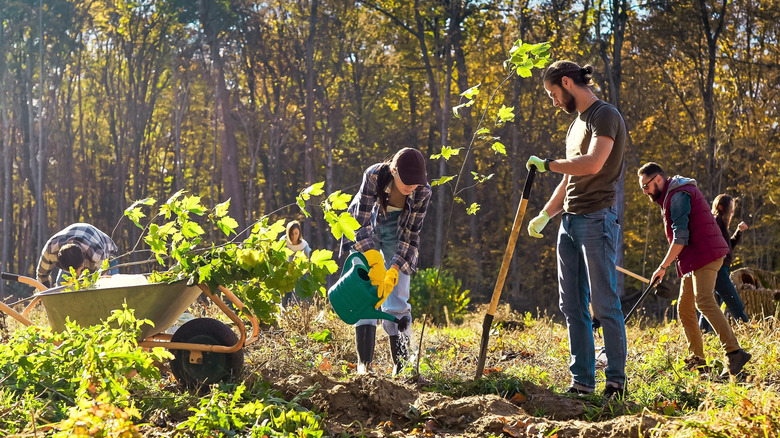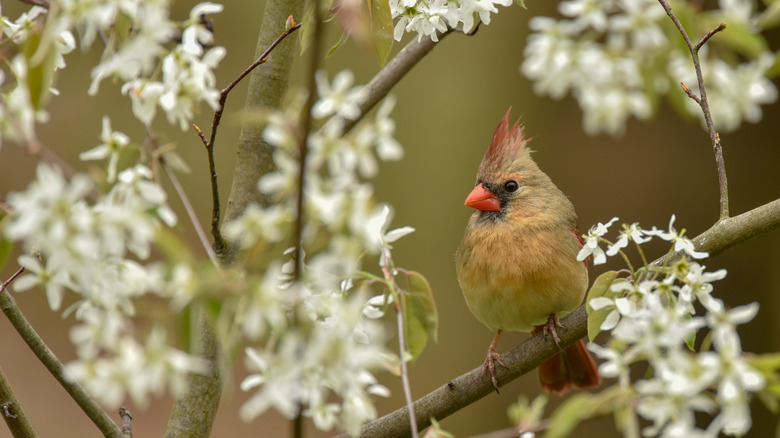The Fruiting Shrub To Plant In Fall That Will Feed & Attract Spring Birds
As the weather changes in autumn, the chatter of new birdsong in our yards can make us start to wonder which plants our feathered friends might need in spring. One option that will bring more birds to your yard is the serviceberry (Amelanchier spp.), a small tree or shrub. If you plant one in fall, the plant's branches will be covered with white flowers and all sorts of wildlife once winter is over. This stunning ornamental will attract robins to your yard, as well as northern cardinals, chickadees, goldfinches, and Baltimore orioles. Downy serviceberry (Amelanchier arborea), in particular, is used by an astounding 35 different species of birds. These early bloomers draw pollinators too, such as cellophane bees, which are out foraging for food when winter ends. And as a bonus, these shrubs also have beautiful autumn foliage.
Many types of Amelanchier species, also commonly known as shadbush and saskatoon, are native to North America. Birds will feed on the berries of these shrubs in summer when the fruits ripen to blueish purple, while in spring our feathered residents will scour their branches and twigs for insects, especially protein-rich caterpillars. In fact, Amelanchier species support up to 92 different kinds of caterpillars in Eastern North America, making these plants keystone species. In addition to relying on them for nourishment, birds also use the branches of serviceberries for cover and nest-building.
How to plant serviceberries in fall for spring birds
Before you choose an Amelanchier species, check its growing requirements and compare them to your conditions. Serviceberries thrive in USDA Hardiness Zones 4 to 9 and are adaptable to many soil types. You'll get the best results if you choose one that's native to your area. For good flowering, grow serviceberries in full sun to part shade where soil is acidic to neutral. Space plants out to allow enough room for them to spread — for instance, downy serviceberry needs 12 feet between specimens. Also, when adding one of these to your yard in fall, make sure to get it in the ground at least six weeks before your first hard frost so the plant's roots have plenty of time to get established.
You might want to also take advantage of autumn to plant other bird-friendly perennials, shrubs, and trees in your yard as well, to give your feathered visitors lots of choice in terms of food, cover, and nesting options when spring comes. And if you're hoping to attract and feed birds from the vegetation in your yard, do them a favor and eliminate the use of pesticides and herbicides from your gardening routine too to keep them safe. In addition to its wildlife value, serviceberry is the native berried tree you'll want to grow for all of its benefits — including edible fruit. If your local wildlife doesn't devour it all, you can turn some of those blueberry-like berries into a delicious cobbler.

